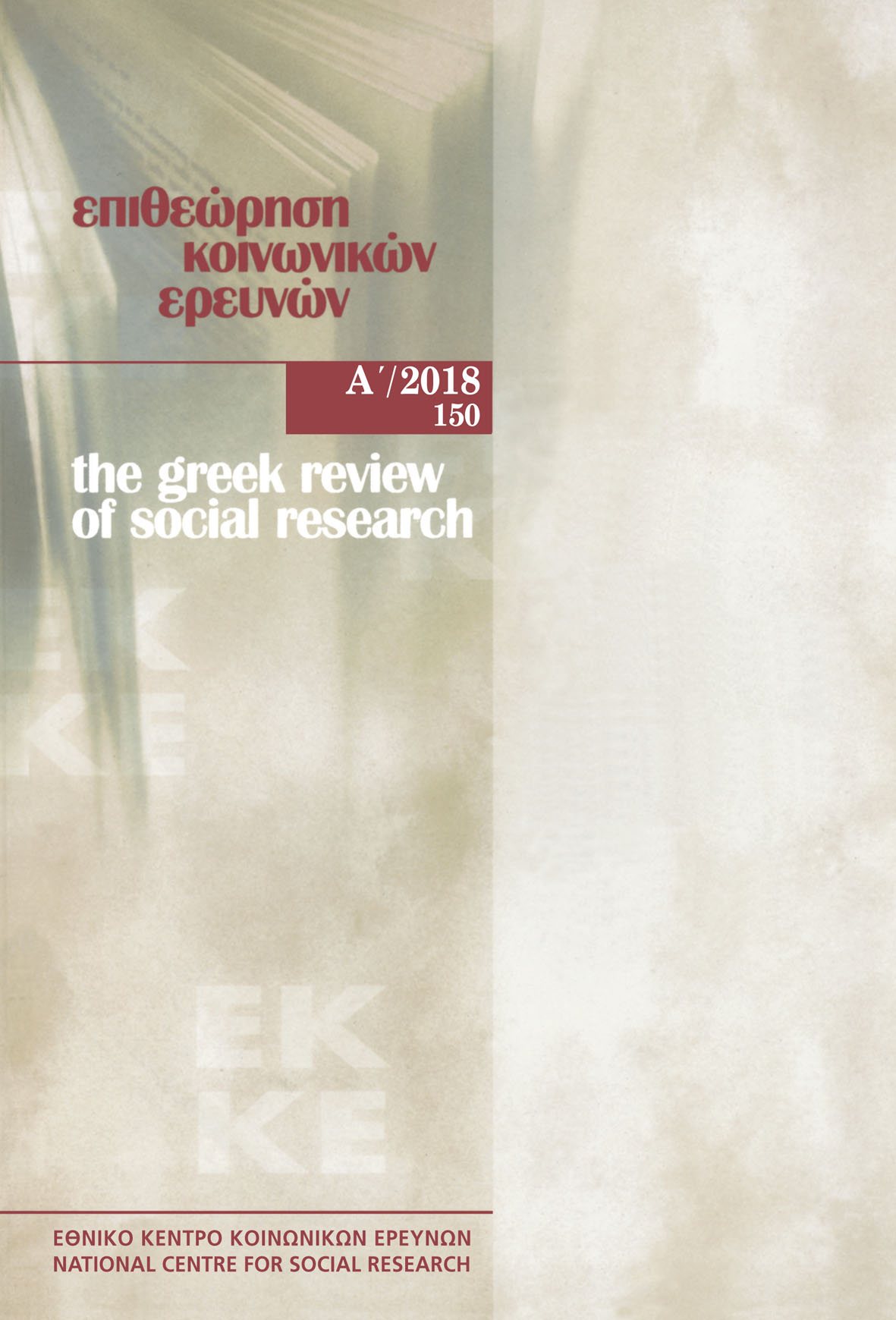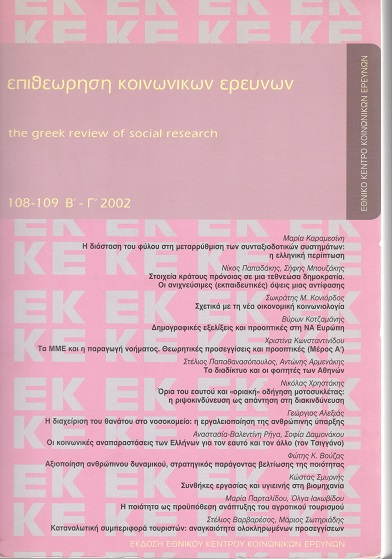Σωματικές εμπειρίες, εικόνα σώματος και κοινωνική ταυτότητα ατόμων με τυφλότητα: ποιοτική μελέτη στην Ελλάδα

Περίληψη
Μολονότι η τύφλωση αποτελεί συχνή μορφή αναπηρίας, οι σωματικές εμπειρίες, η εικόνα σώματος και η κοινωνική ταυτότητα των τυφλών δεν έχουν ερευνηθεί εκτεταμένα. Πραγματοποιήθηκε ποιοτική έρευνα με συνεντεύξεις σε επτά τυφλούς και τα αποτελέσματα έδειξαν ότι η αίσθηση ταυτότητάς τους είναι ισχυρά δομημένη, χωρίς στιγματισμό και χωρίς προβλήματα στην κοινωνικοποίησή τους. Οι τυφλοί αρνούνται τη διαφορετική αντιμετώπιση και βασίζονται στις αισθήσεις τους μόνο για την καθημερινή επιβίωση. Οι σωματικές εμπειρίες είναι βασικές για την αναγνώριση του περιβάλλοντός τους και η εξωτερική εμφάνιση αποτελεί συστατικό στοιχείο της εικόνας εαυτού. Τα άτομα με προβλήματα όρασης δεν εμφανίζουν αβεβαιότητα και δυσαρέσκεια για το σώμα τους και δεν έχουν προβλήματα με την ανάπτυξη και διατήρηση της θετικής εικόνας του σώματος. Τα αποτελέσματα μπορούν να χρησιμοποιηθούν για την πληρέστερη ψυχοκοινωνική φροντίδα τους.
Λεπτομέρειες άρθρου
- Πώς να δημιουργήσετε Αναφορές
-
Κούτρα Λ., Τόγκας Κ., Αλεξιάς Γ., Σαββάκης Μ., & Στρατοπούλου Ι. (2018). Σωματικές εμπειρίες, εικόνα σώματος και κοινωνική ταυτότητα ατόμων με τυφλότητα: ποιοτική μελέτη στην Ελλάδα. Επιθεώρηση Κοινωνικών Ερευνών, 150, 151–184. https://doi.org/10.12681/grsr.17958
- Τεύχος
- 2018: 150
- Ενότητα
- Άρθρα

Αυτή η εργασία είναι αδειοδοτημένη υπό το CC Αναφορά Δημιουργού – Μη Εμπορική Χρήση 4.0.
Οι συγγραφείς των άρθρων που δημοσιεύονται στην Επιθεώρηση Κοινωνικών Ερευνών διατηρούν τα δικαιώματα πνευματικής ιδιοκτησίας επί των άρθρων τους, δίνοντας στο περιοδικό το δικαίωμα της πρώτης δημοσίευσης. Άρθρα που δημοσιεύονται στην Επιθεώρηση Κοινωνικών Ερευνών διατίθενται με άδεια Creative Commons 4.0 και σύμφωνα με την άδεια μπορούν να χρησιμοποιούνται ελεύθερα, με αναφορά στο/στη συγγραφέα και στην πρώτη δημοσίευση για μη κερδοσκοπικούς σκοπούς.
Το Εθνικό Κέντρο Κοινωνικών Ερευνών διατηρεί το δικαίωμα να δημοσιεύει, να αναπαραγάγει, να παρουσιάζει στο κοινό, να διανέμει και χρησιμοποιεί άρθρα που δημοσιεύονται στην Επιθεώρηση Κοινωνικών Ερευνών σε οποιοδήποτε μέσο και μορφή είτε μεμονωμένα είτε ως μέρη συλλογικών έργων, για όλο τον χρόνο διάρκειας προστασίας της πνευματικής ιδιοκτησίας και για όλες τις χώρες του κόσμου. Αυτό περιλαμβάνει ενδεικτικά και όχι αποκλειστικά το δικαίωμα δημοσίευσης των άρθρων σε τεύχη της Επιθεώρησης Κοινωνικών Ερευνών, αναπαραγωγής και διανομής μεμονωμένων αντιγράφων των άρθρων, αναπαραγωγής ολόκληρων των άρθρων σε άλλη έκδοση του Εθνικού Κέντρου Κοινωνικών Ερευνών, καθώς και αναπαραγωγής και διανομής των άρθρων ή περίληψης αυτών με χρήση πληροφορικού συστήματος αποθετηρίου.








